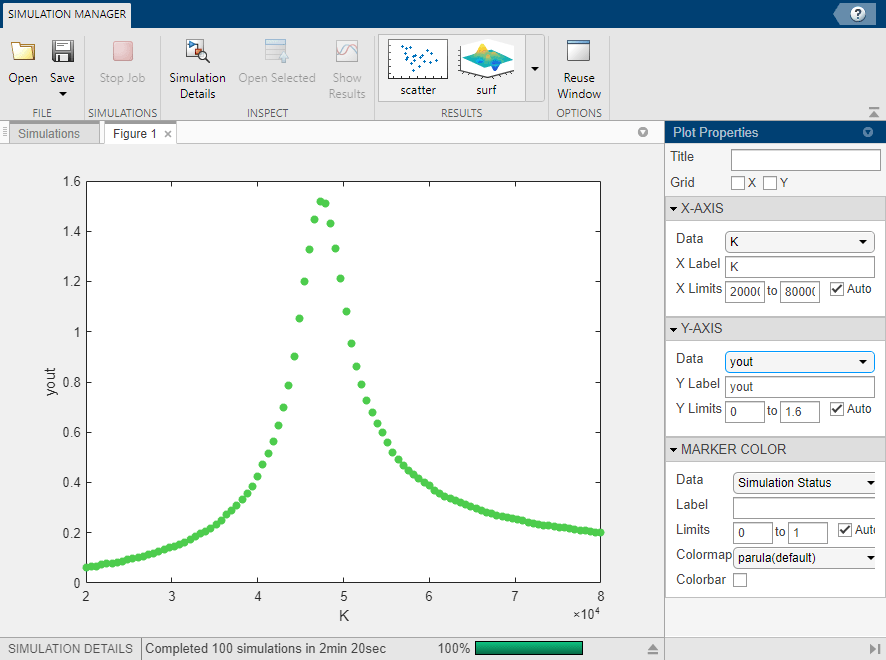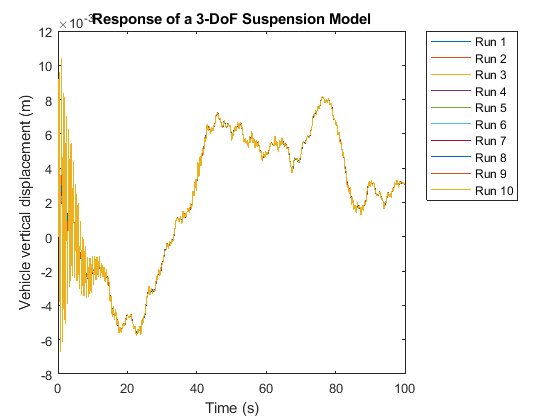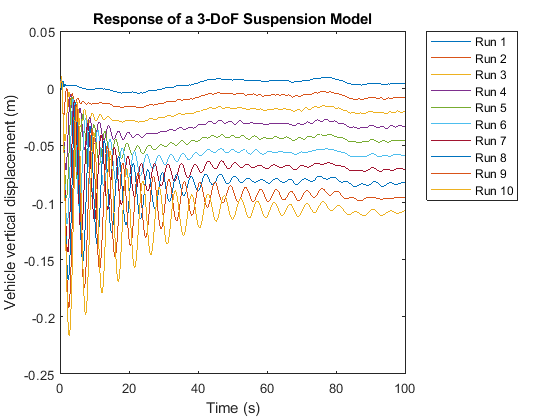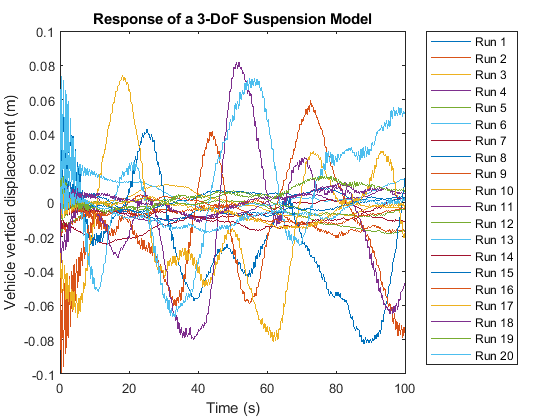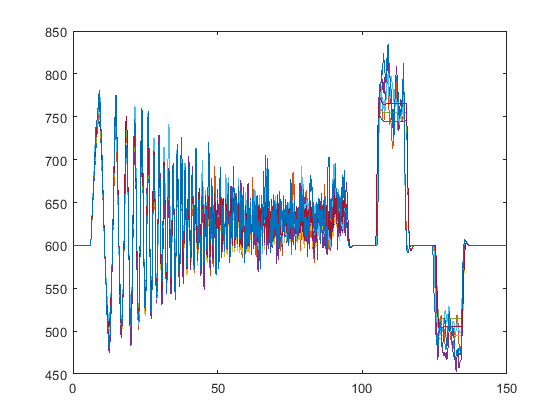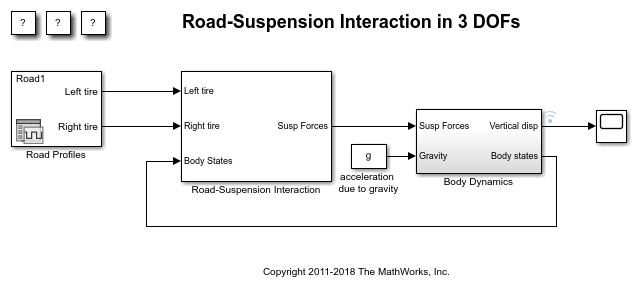Run Multiple Simulations
parsim function, the
batchsim function, or the Multiple Simulations panel
in Simulink®For workflows that involve multiple parallel simulations and logging of
large data, you can use the parsim or
batchsim function, or run the simulations with the
Multiple Simulations panel in the Simulink Editor.
With a Parallel Computing Toolbox™ license, you can use the parsim function to run the
simulations in parallel. The function distributes multiple simulations to
parallel workers to speed up overall simulation time. Using the parsim function with
Parallel Computing Toolbox allows you to automate the creation of parallel pools,
identifies file dependencies, and manages build artifacts for accelerator
and rapid accelerator simulations. The parsim function
runs simulations in serial if a Parallel Computing Toolbox license is not available.
You can use the batchsim function with Parallel Computing Toolbox and MATLAB®
Parallel Server™ licenses. When you use the batchsim
function, simulations are offloaded onto a compute cluster. You can open a
separate MATLAB session to access the job and the results.
To get started, see Running Multiple Simulations and Run Parallel Simulations for a Thermal Model of a House Using parsim.
Functions
batchsim | Offload simulations to run on a compute cluster |
parsim | Simulate dynamic system multiple times in parallel or serial |
applyToModel | Apply configuration specified on Simulink.SimulationIntput
object to model |
setBlockParameter | Set block parameter values on
Simulink.SimulationInput object |
setModelParameter | Specify parameter values for simulation configured using
Simulink.SimulationInput object |
setInitialState | Configure Simulink.SimulationInput object to
set initial state for simulation |
setExternalInput | Specify external input data for top-level input ports in simulation configured
using Simulink.SimulationInput object |
setVariable | Set variable value on SimulationInput
object |
validate | Validate contents of SimulationInput
object |
setPreSimFcn | Specify MATLAB function to run before start of each simulation on
Simulink.SimulationInput object |
setPostSimFcn | Set MATLAB function to run after each simulation |
loadVariablesFromMATFile | Load variables from MAT file into Simulink.SimulationInput
object |
loadVariablesFromExternalSource | Load variables from a custom file into Simulink.SimulationInput
object (Since R2022b) |
getSimulationJobs | Get all Simulink.Simulation.Job objects from
cluster |
showContents | View contents of Simulink.SimulationInput object (Since R2020a) |
Classes
Simulink.SimulationInput | Create Simulink.SimulationInput objects to make changes to
model for multiple or individual simulations |
Simulink.Simulation.Variable | Variables in Simulink.SimulationInput objects (Since R2020a) |
Simulink.Simulation.BlockParameter | Block parameters in Simulink.SimulationInput objects (Since R2020a) |
Simulink.Simulation.Future | Create Future object for simulation |
Simulink.Simulation.Job | Execute batchsim to create a
Simulink.Simulation.Job object, simJob |
Tools
| Multiple Simulations | Run multiple simulations from the Simulink Editor (Since R2021b) |
| Simulation Manager | Monitor multiple simulations and visualize the simulation data |
Topics
- Running Multiple Simulations
Run multiple simulations from the
parsimandbatchsimcommands, and the Multiple Simulations panel in Simulink Editor. - Run Parallel Simulations for a Thermal Model of a House Using parsim
Use a
Simulink.SimulationInputobject to run multiple parallel simulations command line workflow. - Run Parallel Simulations
Programmatically run model simulations in parallel.
- Configure and Run Simulations with Multiple Simulations Panel
Learn about the Multiple Simulations panel in the Simulink Editor.
- Comparison Between Multiple Simulation Workflows
Understand the similarities and differences between
parsim,parsimwithRunInBackground, andbatchsim. - Analyze Results Using Simulation Manager
Use the Simulation Manager to visualize simulation data, analyze simulation results and trends.
